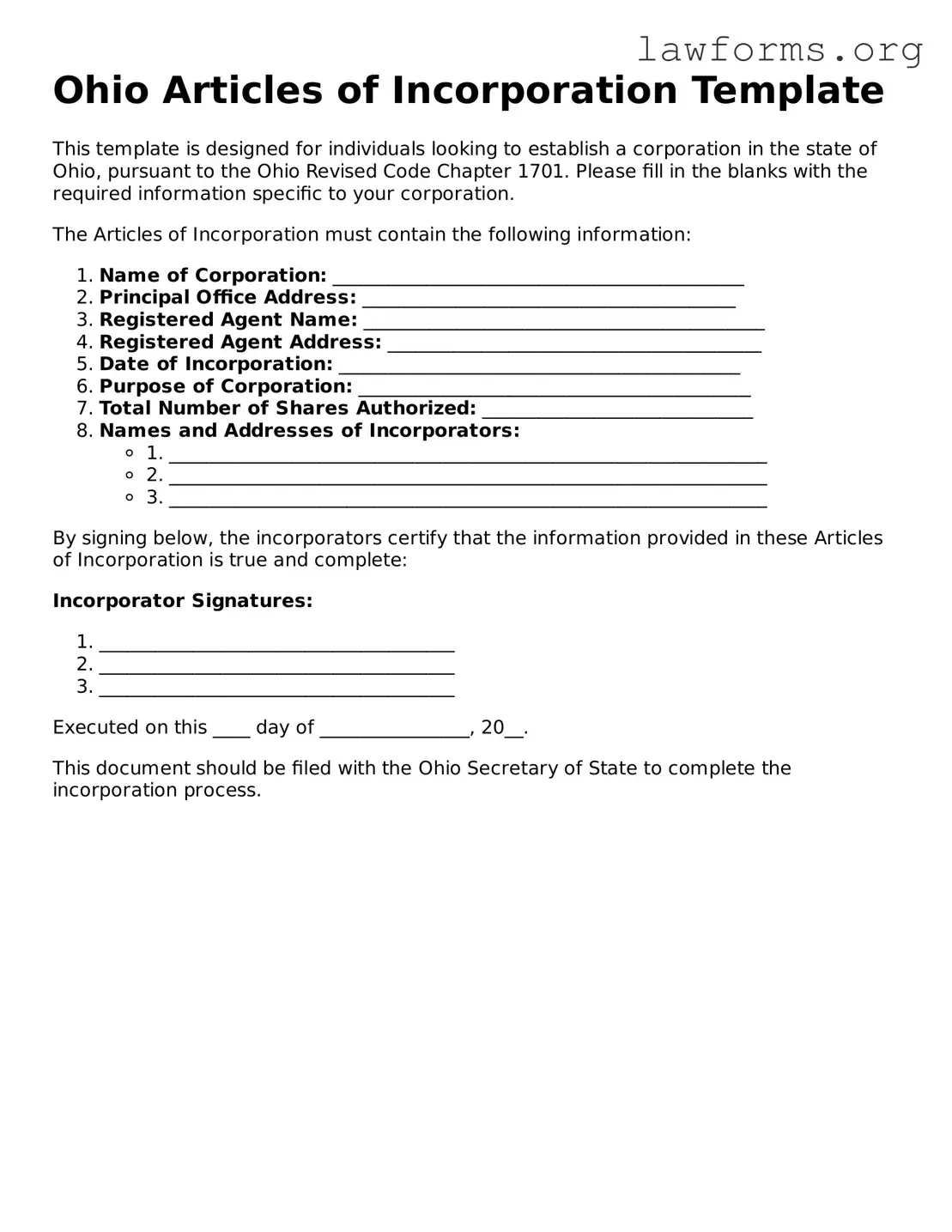Ohio Articles of Incorporation Template
This template is designed for individuals looking to establish a corporation in the state of Ohio, pursuant to the Ohio Revised Code Chapter 1701. Please fill in the blanks with the required information specific to your corporation.
The Articles of Incorporation must contain the following information:
- Name of Corporation: ____________________________________________
- Principal Office Address: ________________________________________
- Registered Agent Name: ___________________________________________
- Registered Agent Address: ________________________________________
- Date of Incorporation: ___________________________________________
- Purpose of Corporation: __________________________________________
- Total Number of Shares Authorized: _____________________________
- Names and Addresses of Incorporators:
- 1. ________________________________________________________________
- 2. ________________________________________________________________
- 3. ________________________________________________________________
By signing below, the incorporators certify that the information provided in these Articles of Incorporation is true and complete:
Incorporator Signatures:
- ______________________________________
- ______________________________________
- ______________________________________
Executed on this ____ day of ________________, 20__.
This document should be filed with the Ohio Secretary of State to complete the incorporation process.
